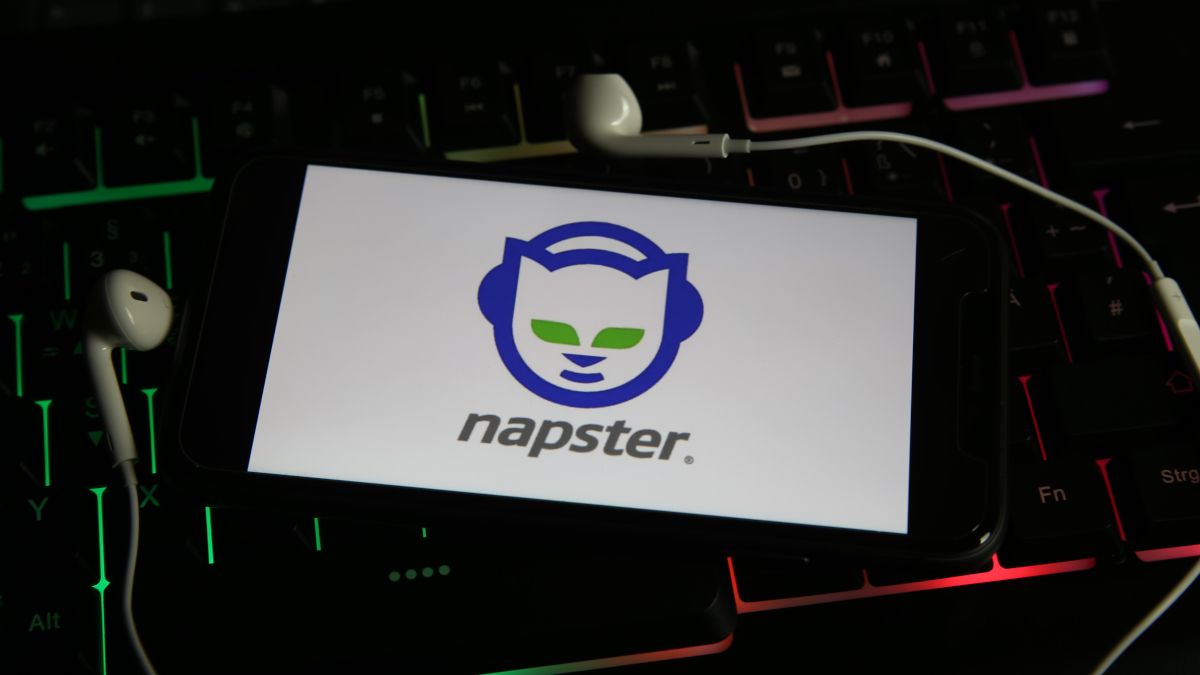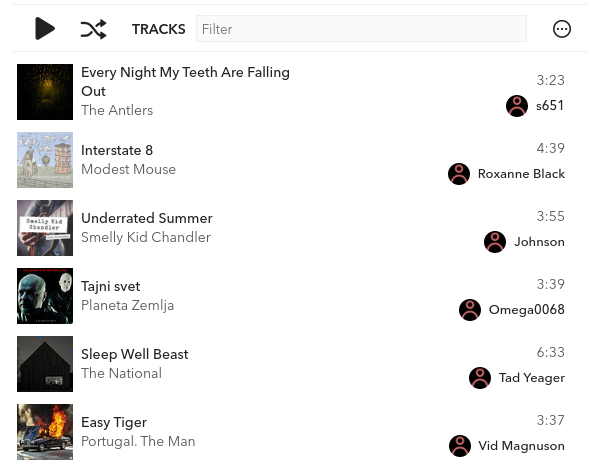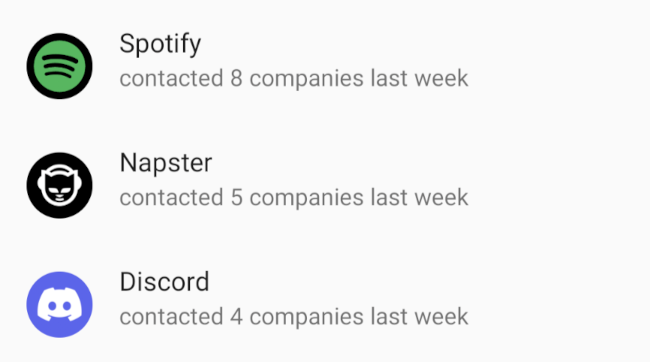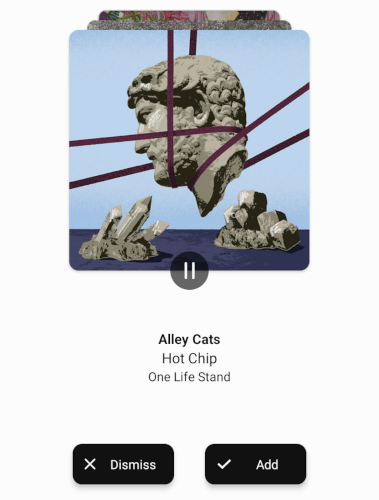Quick Links
I've been a Spotify user for years, but I recently heard Napster might be better for artists. Shocked that Napster still existed, I gave the infamous product a try. Here's what I learned.
Wait... Napster Is Still a Thing?
While you might be surprised to hear Napster still exists, it's not the same file-sharing app you know from back in the day. That Napster died in 2002. The Napster properties, however, were eventually acquired by streaming service Rhapsody, who, in 2016, rebranded as the "new" Napster.
So yes, Napster still exists in the sense that its logo still exists on a music app. The illegal peer-to-peer MP3 sharing is long gone, though, supplanted by de jure internet streaming.
Napster's Best Features
So what does the "new" Napster have to offer? If you're only talking about music, Napster and Spotify are pretty comparable services. Both offer the same audio quality, both have curated playlists and algorithm-based music recommendations, both offer similarly-priced premium subscriptions with offline, ad-free listening.
They also both have a sort of social aspect built-in. While Napster doesn't have a live feed of your friends' listening, it does "match" you with other users based on your listening habits (if you choose to make your profile public). It also puts you in a "listener network" where you can find what music is trending among your matches. I like getting music recommendations through Spotify's social features, and I liked Napster's approach as well.
Another difference I liked is one that some might actually see as a drawback: zero podcasts. Spotify's relentless podcast promotions really drive me up the wall sometimes, and of the few podcasts I listen to these days, none are exclusive to Spotify. In that respect, I've got nothing to lose by switching to Napster.
Napster in fact doesn't have several of Spotify's smaller features and integrations, like car mode and the voice assistant. For the most part, I didn't miss those features and actually saw it as a benefit. Some call Spotify a "privacy nightmare," and indeed monitoring the active advertising trackers on my Android phone reveals Spotify as the worst offender of all my apps. The Napster app, in comparison, contacted almost half as many external companies during the same period, likely due to the lack of integrations.
Napster isn't exactly a private alternative, though. As you can see in the screenshot above, it's actually the second-worst offender behind Spotify, making it more like a lesser of two evils.
One more small Napster feature I really liked was that you could set GIFs as your playlist artwork. I love curating music in themed playlists, and I love GIFs, so that combination was a wish come true for me.
The Problems With Napster
Immediately disappointing was some missing discography from some of my favorite artists, and a few artists totally absent from Napster. These were mainly international or underground artists. However, I also found some releases from my favorite artists that don't exist on Spotify. So, to some extent, the missing music was canceled out.
Another annoyance was Napster's lack of an official Linux or Mac desktop app. You can get a desktop app for Windows, but I primarily use Linux on my PC, so my only option was the Napster web app. Playback wasn't always smooth, and it would occasionally crash my browser. Spotify's web app isn't much better, but that's why I prefer the desktop app.
Another small but key feature I missed was Spotify Connect, which allows you to play music on one device and control it from another. With Napster, if I leave my desk with music playing on my PC, I have to return to it to pause or skip the music instead of just using my phone like I can with Spotify. Again, it's a small feature, but I find it immensely convenient because of the way I stream music.
I also found a lot of Napster's attempts at music recommendations ill-fitting. I'm not talking about just the recommendations themselves, but also the music-finding tools. For example, a lot of reviews I read talked up Napster's unique "playlist editing" mode. It plays short clips of recommended songs, and you can swipe left or right, Tinder-style, to dismiss or add the song to your playlist.
It's a novel tool, but I didn't find myself using it very much in reality because it's just too hard to judge a song from a brief clip. I usually didn't want to dismiss them, but I wasn't persuaded into adding them either. I suppose you could add them to your playlist on impulse and then decide whether you like them later. But you could do that more efficiently by just batch-adding a list of recommendations, so why bother with a gimmicky feature like that at all?
Doesn't Spotify Underpay Artists?
One reason I decided to try Napster was a viral T-Pain tweet that purported to show how many streams it would take for an artist to make $1 on eight different services. According to the tweet, Napster pays artists the most, while Spotify ranks sixth (with YouTube Music paying the least). If you dig deeper, though, you'll find there are a couple of problems with this data.
First, platforms like Spotify typically don't pay artists directly; they pay record labels or distributors (companies that publish music for independent artists). Labels and distributors, after taking their cut, in turn, pay the artists. We're arguing semantics here, but it's important for understanding where the money goes.
Second, the monetary value of a particular stream can vary depending on a number of factors. For example, the region that stream came from, and the number of premium subscribers presently in that region, can mean a stream in one country gets you less money than the same stream in another. Add on top of that the varying rates at which a label or distributor might take their piece of the pie, and you see how a single stream on any given platform doesn't consistently equate to a specific amount of money.
Even if you managed to conclusively prove that your stream is worth more to an artist on another platform, it's unlikely that moving to that service will meaningfully help your favorite artists. Streams are only lucrative for artists who are exceptionally popular, or whose music gets added to popular playlists. Most artists instead rely on things like merchandise, touring, and licensing for financial support.
Convenience Is King
The fact is, when the novelty of the retro Napster branding wore off, there wasn't much for me to hold on to as a good reason to leave Spotify. I have an extensive collection of playlists I've curated over the years, and I couldn't move playlists between services without the help of a third-party app that I'm not inclined to trust. I'd also miss the convenience of Spotify's desktop app, the Connect integrations, and the Discover Weekly playlist whose algorithm seems to know me better than I know myself.
On top of all that, Napster doesn't offer a comparable plan to Spotify's "Duo" plan, so my partner and I stand to save money by sticking to Spotify. Ultimately, GIF playlists and throwback theming just don't hold a candle to convenience and savings.




